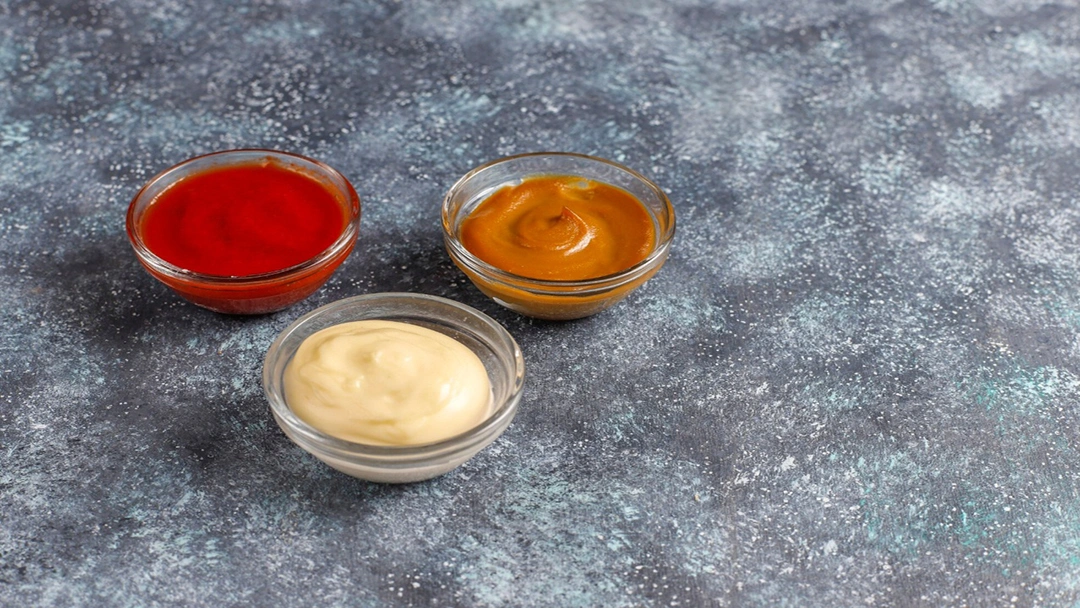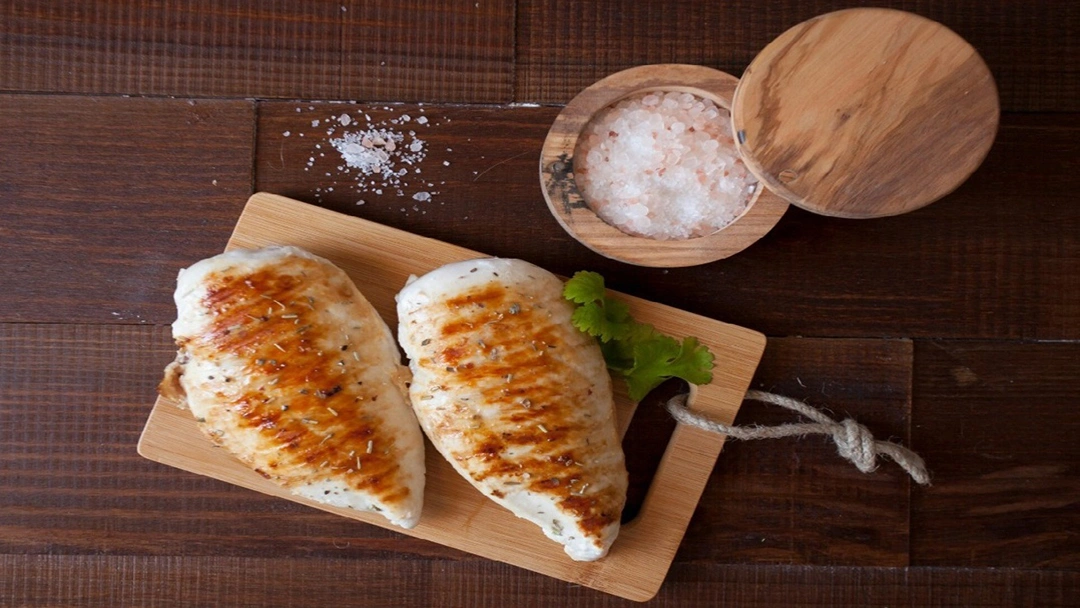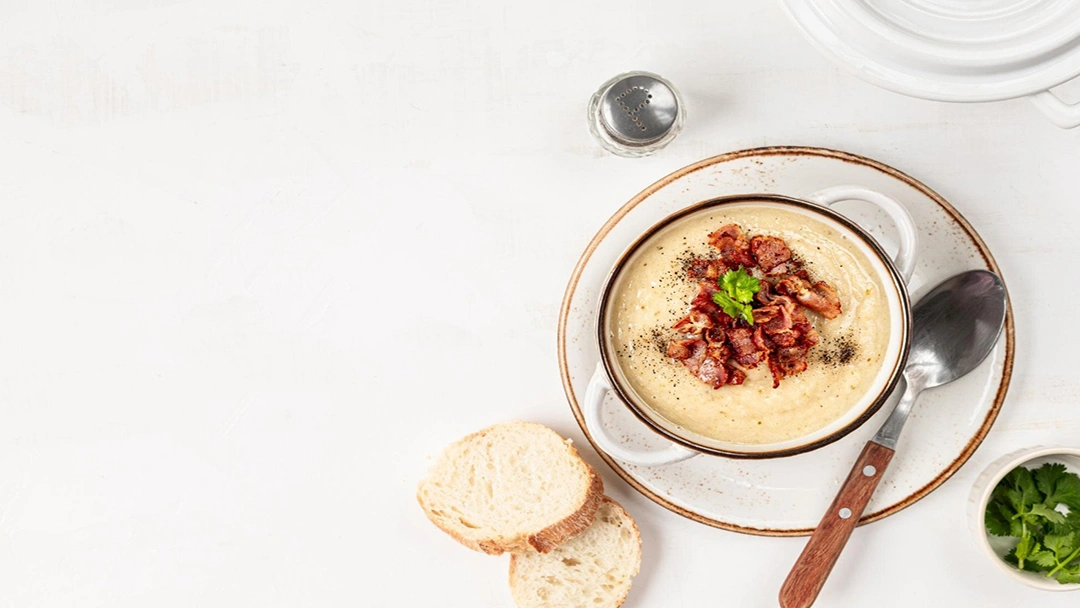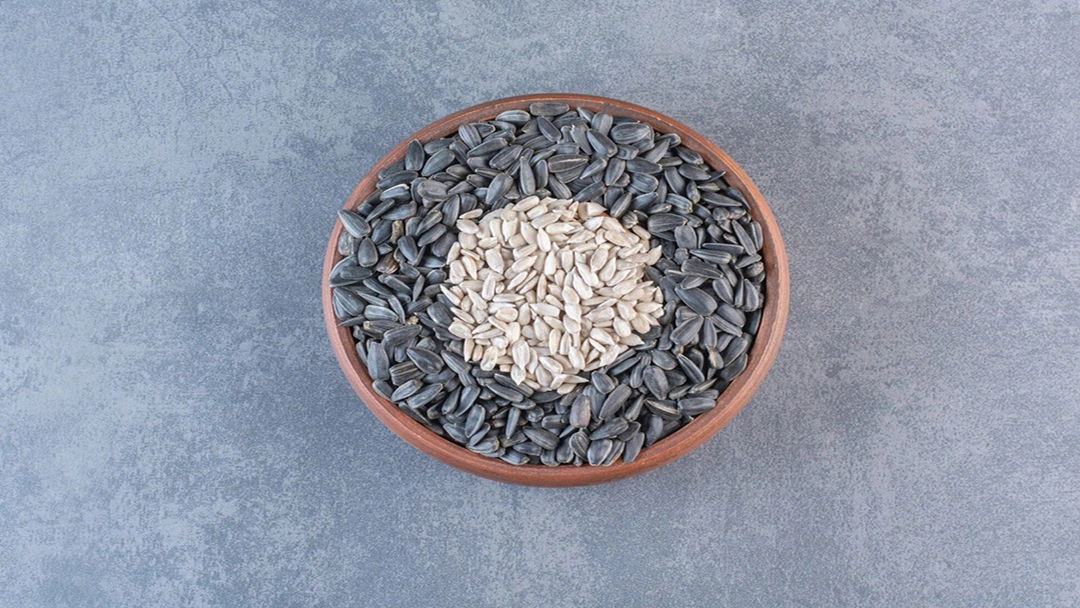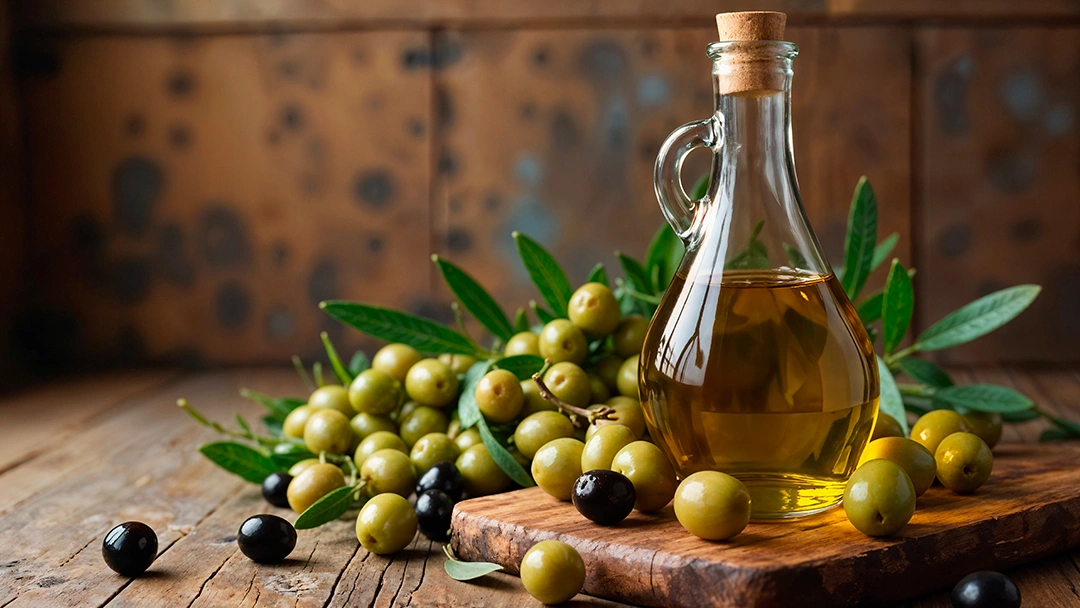Porterhouse vs. Ribeye
To choose the right steak for your meal, you need to consider the rules of the specific diet you’re following, your taste and preferences, your health condition, and your fitness goals.
To compare porterhouse vs. ribeye, we can focus on their fat content, thickness, cost, taste, and tenderness.
Fat Content
- Porterhouse: Generally has less marbling than ribeye, especially in the tenderloin portion. The fat content is more distributed.
- Ribeye: High marbling, with streaks of fat throughout the muscle, making it one of the fattiest cuts of steak.
Thickness
- Porterhouse: Usually cut thick, often around 1.25 inches or more, due to the combination of the tenderloin and strip steak portions.
- Ribeye: Usually cut to about 1 inch thick, though it can vary as you prefer.
Learn More: 20 Best Carnivore Diet Desserts Recipes
Cost
- Porterhouse: Generally more expensive due to the inclusion of the tenderloin, which is a prized cut.
- Ribeye: Priced slightly lower than porterhouse but still on the higher end due to its flavor and marbling.
Taste
- Porterhouse: Offers a mix of textures and flavors, with the tenderloin being tender and the strip steak portion providing a rich, beefy taste.
- Ribeye: Also has a rich, beefy flavor, largely due to the high marbling content which melts during cooking, adding juiciness and taste.
[cta-meal-plan]
Tenderness
- Porterhouse: The tenderloin part is extremely tender, while the strip steak side is firmer but still tender.
- Ribeye: Very tender throughout due to the abundant marbling, especially when cooked to medium-rare.
The table below summarizes the main similarities and differences of porterhouse steak vs. ribeye steak so you can easily compare them.
| Attribute | Porterhouse | Ribeye |
|---|
| Fat Content |
Less marbling, distributed |
High marbling, throughout the muscle |
| Thickness |
Usually thick (1.25+ inches) |
Usually about 1 inch thick |
| Cost |
Generally more expensive |
Slightly lower, still premium |
| Taste |
A mix of tender and beefy |
Rich, beefy flavor |
| Tenderness |
Very tender (tenderloin part) |
Tender throughout |
| Protein in 100 g |
20.4 g |
18.7 g |
| Fat in 100 g |
14.6 g |
20 g |
| Calories in 100 g |
218 kcal |
260 kcal |
So, considering the above factors, which of these two cuts of beef can be a better choice?
Learn More: The Best Meat to Smoke: 15 Best Cuts to Throw into the Smoker
Which One Is Better?
First please remember that there is no one-size-fits-all answer and choosing one of these cuts of meat as better is mainly personal and dependent on your lifestyle, diet, health status, and preferences.
Anyhow, comparing porterhouse vs. ribeye, we can say porterhouse can be better if:
- You enjoy a mix of textures and flavors in one steak.
- You prefer a thicker cut.
- You enjoy the tender, mild flavor of the tenderloin.
Also, porterhouse has less fat, especially in the tenderloin portion, making it leaner than ribeye, which can be better for those with high cholesterol levels or underlying heart issues.
Porterhouse contains fewer calories than ribeye, so it can be a slightly better option if you're watching your caloric intake and trying to lose weight.
[cta-gocarnivore-plans]
Ribeye is better if:
- You love a rich, beefy flavor.
- You enjoy high marbling for extra juiciness and taste.
- You prefer tenderness throughout the entire steak.
Also, ribeye has more fat, which increases its calorie content and potential for higher saturated fat intake. But it’s a better choice for those on low-carb, high-fat diets like Keto and Carnivore Diet.
Another important point that can affect our choice is the cooking method of these beef cuts. Let’s learn how to make juicy, mouth-watering porterhouse and ribeye steak.
Considering the cooking process and side dishes you can serve these steaks with, you can better realize which steak aligns more with your preferences and diet goals.
Learn More: White Meat vs. Dark Meat: Which One Is Better for You?
"The United States tops the list of the globally leading beef and veal producing countries: the country produced over 12.2 million tons of beef and veal (net carcass weight) as of 2023, followed by Brazil and the European Union, respectively. That year, total production of beef and veal amounted to just above 59 million metric tons worldwide. The global cattle population amounted to over 942.6 million head in 2023, up from approximately 940 million in 2022."
How to Cook a Porterhouse?
Cooking a porterhouse steak properly can result in a delicious, tender, and flavorful meal. Here’s a step-by-step guide to cooking a porterhouse steak. You can also check these Carnivore Diet recipes to find various low-carb recipes with meat.
Ingredients:
- 1 porterhouse steak (1.5-2 pounds)
- 2 tbsp unsalted butter
- 2 tbsp oil
- 2 tsp salt
- 1 tsp black pepper
- 3-4 garlic cloves (optional)
- 2-3 sprigs of rosemary or thyme (optional)
[cta-meetings]
Instructions:
- Remove the steak from the fridge and let it come to room temperature for 30-45 minutes.
- Pat the steak dry with paper towels.
- Season both sides of the steak with salt and pepper, and press the seasonings into the meat.
- Preheat the oven to 425°F (220°C).
- Preheat a cast-iron skillet or heavy oven-safe pan over high heat until smoking hot.
- Add oil to the hot skillet and swirl it to coat the bottom.
- Place the steak in the skillet and sear it for 2-3 minutes on each side until a deep-brown crust forms.
- Avoid moving the steak around and let it sear undisturbed
- Insert an oven-safe meat thermometer into the thickest part of the steak (not touching the bone).
- Transfer the skillet to the preheated oven and cook until the internal temperature reaches your desired doneness:
- Rare: 120-125°F (49-52°C)
- Medium-rare: 130-135°F (54-57°C)
- Medium: 140-145°F (60-63°C)
- Medium-well: 150-155°F (65-68°C)
- Well-done: 160°F (71°C) and above
- Remove the steak from the oven and transfer it to a cutting board.
- Let the steak rest for at least 5-10 minutes to have a juicy steak.
- Bon Appetit!
Tips for a Better Porterhouse Steak
- Marinade: Marinating the steak for a few hours before cooking can add flavor. A simple marinade of olive oil, garlic, rosemary, and lemon juice works well.
- Compound Butter: Top the cooked steak with a pat of compound butter (butter mixed with herbs, garlic, and lemon zest) for added richness.
- Sear and Rest Technique: For an even crust, try the sear-rest-sear method: sear the steak, let it rest for 10 minutes, and then sear again before finishing in the oven.
[cta-meal-plan]
Sides You Can Serve Porterhouse Steak with
- Roasted Brussels sprouts
- Grilled asparagus
- Sautéed spinach with garlic
- Roasted root vegetables (carrots, parsnips, sweet potatoes)
- Garlic mashed potatoes
- Crispy roasted potatoes
- Baked potato with sour cream and chives
- Potato gratin
- Classic Caesar salad
- Mixed greens with vinaigrette
- Tomato and mozzarella salad (Caprese)
- Spinach and strawberry salad
- Creamed spinach
- Mushroom risotto
- Garlic bread
- Macaroni and cheese
Learn More: What Is Speck Meat? 5 Best Brands of Speck Meat
How to Cook a Ribeye?
Here are the ingredients and instructions needed to make a yummy ribeye steak dish. You can also check the tips to make a better ribeye steak and the most common side dishes below the instructions.
[cta-gocarnivore-plans]
Ingredients:
- 1 ribeye steak (1.25-1.5 pounds)
- 2 tbsp unsalted butter
- 2 tbsp oil
- 2 tsp salt
- 1 tsp black pepper
- 2-3 cloves garlic (optional)
- 2-3 sprigs of rosemary or thyme (optional)
Instructions:
- Take the steak out of the fridge and let it come to room temperature for 30-45 minutes.
- Dry the steak with paper towels.
- Season both sides of the steak with salt and black pepper.
- Preheat a cast-iron skillet or heavy pan over high heat.
- Add 2 tablespoons of oil to the hot skillet and swirl it to coat the bottom.
- Place the steak in the skillet and sear it for 3-4 minutes on each side to see a deep-brown crust.
- Add butter, smashed garlic cloves, and rosemary or thyme to the skillet.
- Tilt the pan slightly and use a spoon to continuously baste the steak with the melted butter and herbs for 1-2 minutes on each side.
- Preheat the oven to 400°F (200°C) and transfer the skillet to the oven.
- Cook until the internal temperature reaches your desired doneness.
- Remove the steak from the skillet and transfer it to a cutting board.
- Let the steak rest for at least 5-10 minutes, then carve and enjoy!
Tips for a Better Ribeye Steak
- Marinade: Marinating the steak for a few hours before cooking with olive oil, soy sauce, garlic, and rosemary can add flavor.
- Compound Butter: Top the cooked steak with a pat of compound butter (butter mixed with herbs, garlic, and lemon zest) to increase richness.
- Reverse Sear Method: For a perfectly even cook, try the reverse sear method: cook the steak in a low oven (250°F or 120°C) until it reaches an internal temperature of about 10-15°F below your desired doneness, then sear it in a hot skillet for a crusty exterior.
[cta-meetings]
Sides You Can Serve Ribeye Steak with
- Grilled asparagus: 1 bunch trimmed asparagus, 1 tablespoon olive oil, salt and pepper
- Roasted Brussels sprouts: 1 pound trimmed and halved Brussels sprouts, 2 tbsp olive oil, salt and pepper
- Garlic sautéed spinach: 1 pound fresh spinach, 2 tbsp olive oil, 3 cloves of thinly sliced garlic, salt and pepper
- Garlic mashed potatoes: 2 pounds peeled and cubed potatoes, 4 cloves of minced garlic, 1/2 cup milk, 1/4 cup unsalted butter, salt and pepper
- Crispy roasted potatoes: 2 pounds halved potatoes, 3 tbsp olive oil, 1 tsp garlic powder, salt and pepper
- Classic Caesar salad: 1 chopped head romaine lettuce, 1/2 cup Caesar dressing, 1/4 cup grated Parmesan cheese, 1 cup croutons
- Mixed greens with vinaigrette: 4 cups mixed greens, 1/4 cup vinaigrette dressing, 1/4 cup halved cherry tomatoes, 1/4 cup cucumber slices
- Creamed spinach: 1 pound fresh spinach, 1/2 cup heavy cream, 1/4 cup grated Parmesan cheese, 2 tbsp butter, salt and pepper
- Garlic bread: 1 sliced baguette, 1/4 cup softened butter, 2 cloves of minced garlic, 1 tbsp chopped parsley
What if you want to substitute these two steaks, can they be good substitutes in different meat recipes?
Learn More: What Is The Best Way to Cook Tomahawk Steak: Grilling or Oven-Cooking?
Can You Substitute Ribeye for Porterhouse?
Yes, you can substitute ribeye for porterhouse in many recipes, though there are some differences to consider due to the distinct characteristics of porterhouse vs. ribeye.
Cut Location and Composition:
- Porterhouse includes both a portion of tenderloin and a strip steak, separated by a T-shaped bone. It's a larger, more complex cut.
- Ribeye is a boneless cut from the rib section, with high marbling and rich, beefy flavor.
[cta-meal-plan]
Flavor and Texture:
- Porterhouse offers a combination of textures and flavors—tenderloin is very tender, while the strip steak portion is firmer and more flavorful.
- Ribeye has a rich, beefy flavor and tenderness due to the marbling throughout the meat.
Cooking Method:
- Porterhouse is often cooked with a method that allows both parts of the steak to cook evenly (e.g., searing and then finishing in the oven).
- Ribeye is usually cooked quickly over high heat due to its marbling, either by grilling, pan-searing, or broiling.
Portion Size:
- Ribeye steaks are usually smaller than porterhouse steaks. If the recipe calls for a porterhouse, you may need to use two ribeye steaks to match the portion size.
Cooking Time:
- Ribeye steaks generally cook faster due to their higher fat content and boneless nature. Adjust the cooking time to avoid overcooking.
Learn More: Braunschweiger vs. Liverwurst: Taste, Nutrients and Calories
[cta-gocarnivore-plans]
Conclusion
Comparing porterhouse vs. ribeye steak shows that while they share similarities in nutrients, especially protein content, they differ in fat and calorie content.
They also differ in taste and texture, so you need to choose the one that goes well with the recipe you’re using.
However, please remember to consume both steaks in moderation to avoid extra calories and potential negative health effects.











